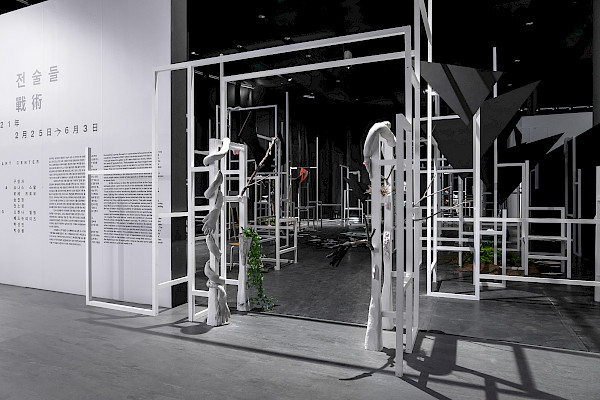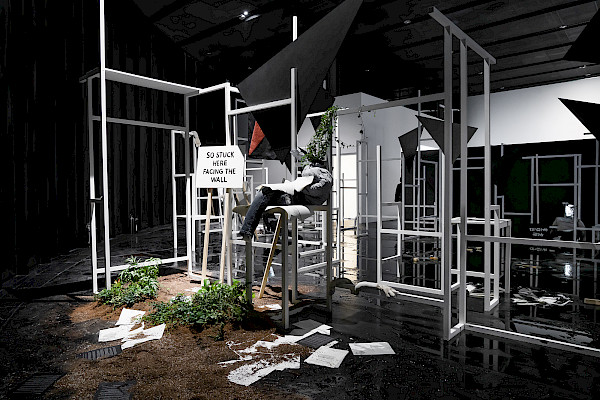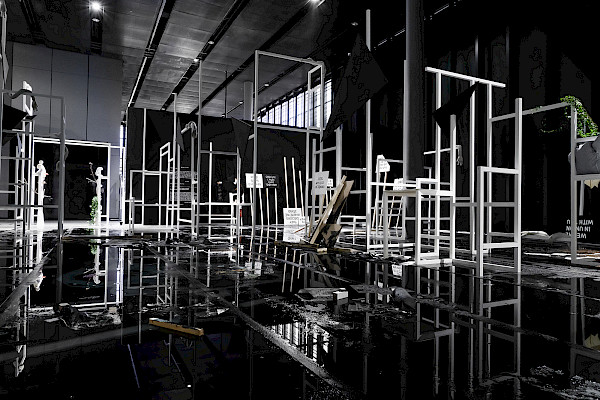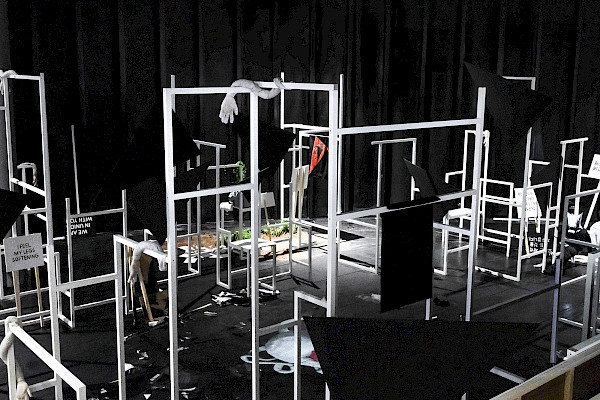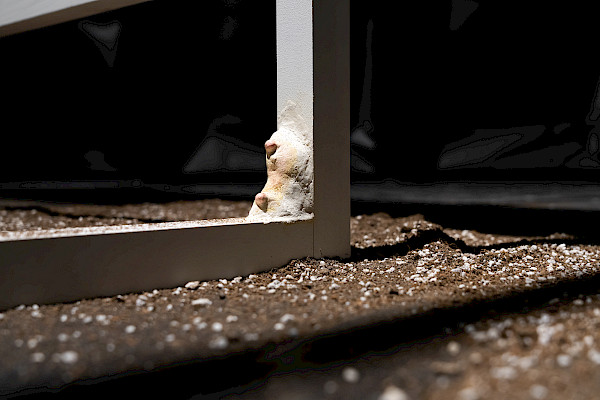Obscur Unions
2021
February 25-June 3, 2021
Nam June Paik Art Center, Yongin, Seoul Capital Area, South-Korea
Obscur Unions is the third chapter in the collaboration between artists Laure Prouvost and Jonas Staal, that was preceded by The Aube’s cure Parle Ment (2017) and Obscure Union (2019). The works take the form of sites of assembly conceptualized by Staal in which anthropomorphic entities, plants, arms, branches, tongues, toxins, breasts and signs created by Prouvost gather as political actors.
These spaces of assembly, of which the artists describe themselves as “co-administrators,” make reference to constructivist theory, specifically the notion of the “object-as-comrade” developed by artists such as Alexander Rodchenko and Varvara Stepanova. In Prouvost and Staal’s work, this political recognition of objects is expanded to non-human, other-than-human and more-than-human comradeship.
Neither of the presences in these spaces of assembly – branch, plant, tongue or arm – are themselves obscure, as Prouvost and Staal argue that the obscure should be considered relational. It is through unscripted, rogue relations that emerge in assembly between branch and toxin, between tongue and sign, that normative reality is torn and the obscure manifests as a political, transformative force.
-
PROJECT BY
Laure Prouvost and Jonas Staal
-
PROJECT TEAM
Laure Prouvost (artist), Jonas Staal (artist), Paul Kuipers (architect), Maud Gyssels and Fran Hawker (Studio Laure Prouvost), Nadine Gouders (Studio Jonas Staal). Nam June Paik Art Center team: Chaeyoung Lee (chief curator), Kim Sun Young (curator), Kang Shindae (photographer)
-
COMMISSIONED BY
Nam June Paik Art Center, Yongin, Seoul Capital Area, South-Korea (KR)










